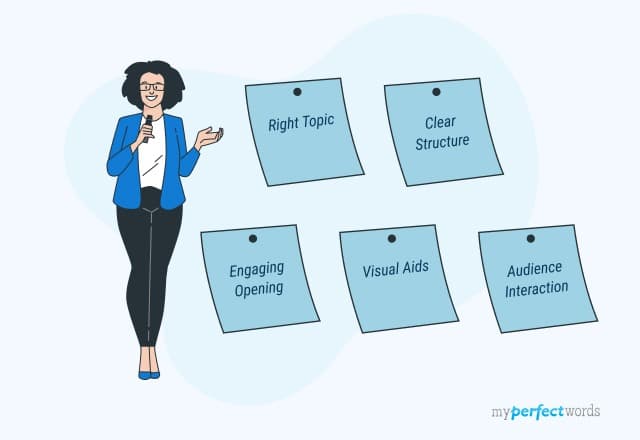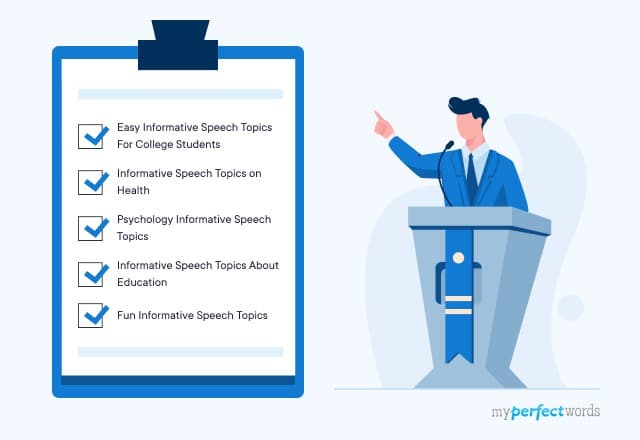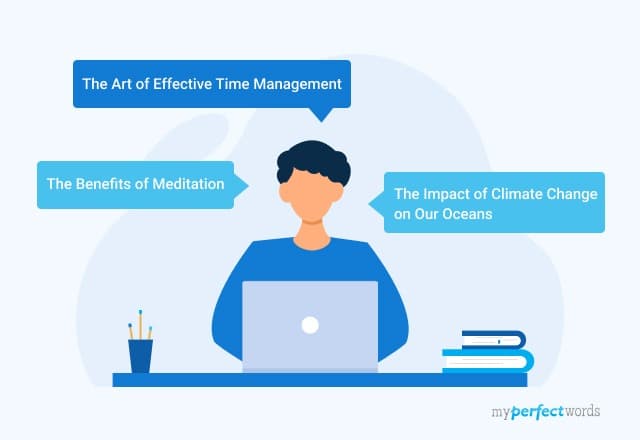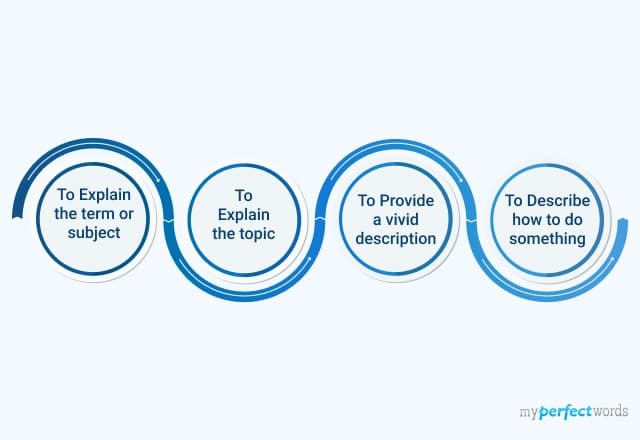

Are you facing the challenge of delivering an informative speech and unsure where to start? You've come to the right place!
An informative speech aims to educate the audience about a specific topic by presenting information in a clear, systematic manner. It ensures that listeners grasp the key points effectively.
So, how do you prepare for your speech? It all begins with crafting a well-structured outline.
In this guide, we'll take you through the process of creating an informative speech outline step by step. Plus, we'll provide inspiring examples to guide you along the way.
Let’s get into it!
On This Page![]()
- 1. What is an Informative Speech Outline?
- 2. How to Write an Informative Speech Outline?
- 3. Informative Speech Outline Examples
What is an Informative Speech Outline?
An informative speech outline is like a roadmap for your presentation. It's a structured plan that helps you organize your thoughts and information in a clear and logical manner.
Here's what an informative speech outline does:
- Organizes Your Ideas: It helps you arrange your thoughts and ideas in a logical order, making it easier for your audience to follow your presentation.
- Ensures Clarity: An outline ensures that your speech is clear and easy to understand. It prevents you from jumping from one point to another without a clear path.
- Saves Time: With a well-structured outline, you'll spend less time searching for what to say next during your speech. It's your cheat sheet.
- Keeps Your Audience Engaged: A well-organized outline keeps your audience engaged and focused on your message. It's the key to a successful presentation.
- Aids Memorization: Having a structured outline can help you remember key points and maintain a confident delivery.
How to Write an Informative Speech Outline?
Writing a helpful speech outline is not so difficult if you know what to do. Here are 4 simple steps to craft a perfect informative outline.
Step 1: Choose an Engaging Topic
Selecting the right topic is the foundation of a compelling, informative speech. Choose unique and novel informative speech topics that can turn into an engaging speech.
Here's how to do it:
- Consider Your Audience: Think about the interests, knowledge, and expectations of your audience. What would they find interesting and relevant?
- Choose Your Expertise: Opt for a topic you're passionate about or knowledgeable in. Your enthusiasm will shine through in your presentation.
- Narrow It Down: Avoid broad subjects. Instead, focus on a specific aspect of the topic to keep your speech manageable and engaging.
With these tips in mind, you can find a great topic for your speech.
Step 2: Conduct Some Research
Now that you have your topic, it's time to gather the necessary information. You need to do thorough research and collect some credible information necessary for the audience to understand your topic.
Moreover, understand the types of informative speeches and always keep the main purpose of your speech in mind. That is, to inform, educate, or teach. This will help you to avoid irrelevant information and stay focused on your goal.
Step 3: Structure Your Information
Now that you have the required information to make a good speech, you need to organize it logically. This is where the outlining comes in!
The basic speech format consists of these essential elements:
The Topic of Your Speech 1. Introduction The introduction aims to grab the audience’s attention and provide background to the topic. Here’s what you should include in your introduction outline:
______________________________________________________________ 2. Body The body section allows you to provide details of the particular topic of your speech. Section 1
Section 2
Section 3
Divide your speech into clear sections or points. Each section should have a main idea and supporting details. Use a logical order, such as chronological, spatial, or cause-and-effect. ______________________________________________________________ 3. Conclusion Add the following elements to make a strong conclusion.
|
Moreover, there are two different ways to write your outline:
- The complete sentence format
- The key points format
In the complete sentence outline, you write full sentences to indicate each point and help you check the organization and content of the speech.
In the key points format, you just note down the key points and phrases that help you remember what you should include in your speech.
Step 4: Review and Revise
Finally, once you've created your initial informative speech outline, you need to review and revise it.
Here's how to go about it:
- Ensure Clarity: Review your outline to ensure that your main points and supporting details are clear and easy to understand.
- Verify Logical Sequence: Double-check the order of your points and transitions. Ensure that the flow of your speech is logical and that your audience can follow it easily.
- Eliminate Redundancy: Remove any redundant or repetitive information. Keep your outline concise and to the point.
- Time Yourself: Estimate how long it will take to deliver your speech. Ensure it fits within the allotted time frame, whether it's a few minutes or an hour.
- Get Feedback: Share your outline with a friend, family member, or colleague and ask for their input. Fresh eyes can provide valuable suggestions for improvement.
Follow these basic steps and write a compelling speech that gives complete knowledge about the topic. Here is a sample outline example that will help you better understand how to craft an informative speech outline.
Informative Speech Outline Examples
Let’s explore a few example outlines to help you visualize an informative speech outline.
Here’s a sample Global Warming Informative Speech Outline:
I. Introduction
II. What is Global Warming?
III. Evidence of Global Warming
IV. Causes of Global Warming
V. Mitigation and Adaptation Strategies
VI. Conclusion
VII. Q&A Session (optional)
|
Here are some more examples that illustrate the outlines for different topics and subjects.
To sum it up,
Creating a good outline is key to giving a clear, organized, and engaging speech. It helps ensure your message comes across with clarity and purpose.
With the tips and examples we've shared, you'll be able to put together a solid outline for your informative speech. So, get started and use these outlines to make your speech stand out.
If you’re excited about public speaking but find writing the speech a bit of a chore, don’t stress. At MyPerfectWords.com, we’ve got you covered.
So, why wait? Buy speech today and step up your public speaking game!

Write Essay Within 60 Seconds!
Use our AI tool to generate high quality essay-18976.png&w=256&q=75&dpl=dpl_AbNuVBkBSBWLkmQ9eKRbvGe7W4ff)
WRITTEN BY
Amanda K.
UPenn English grad completing academic assignments. I deliver quality work across subjects and formats.
Keep reading
Informative Speech Writing - A Complete Guide

Good Informative Speech Topics & Ideas

310 Demonstration Speech Ideas and ‘How To’ Topics - 2025

10+ Informative Speech Examples - Get Inspiration For Any Type

Understanding Different Types of Informative Speeches with Examples
